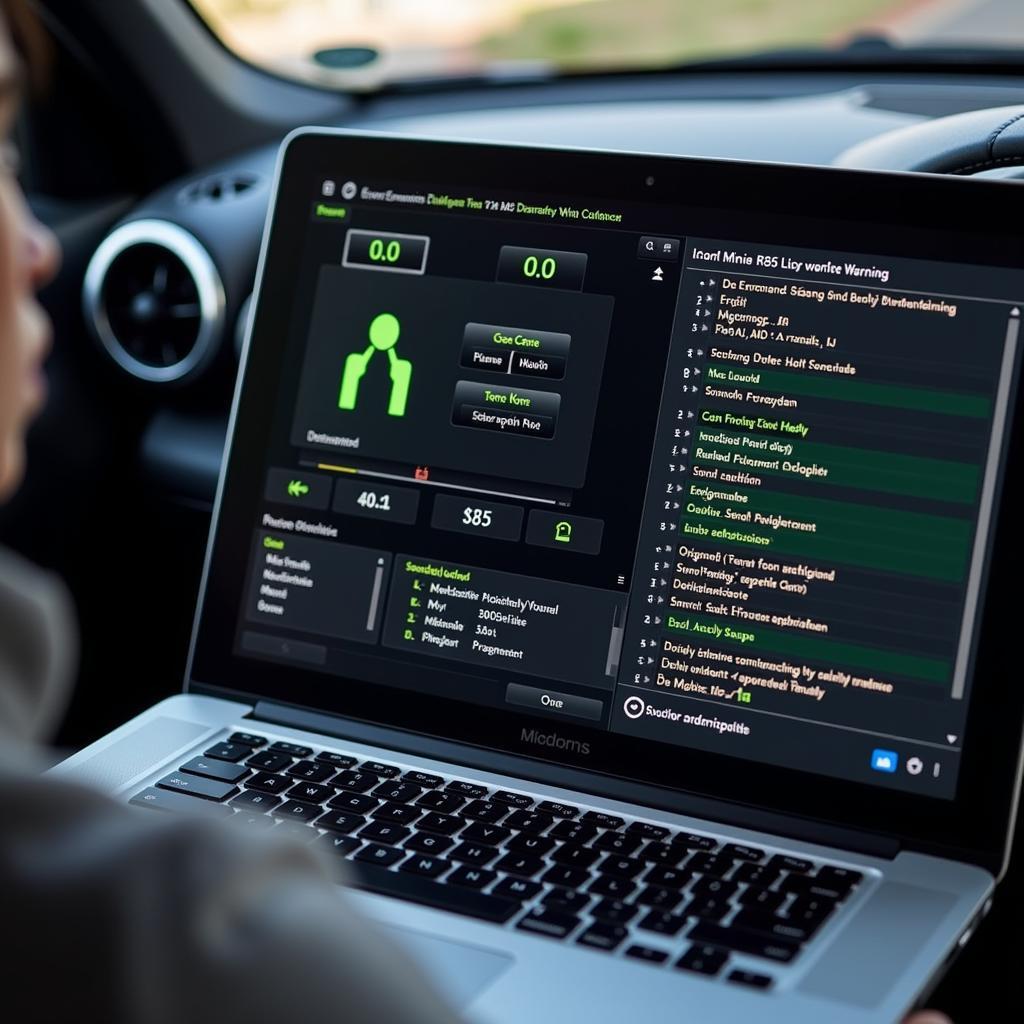The Mini Cooper R56 is a popular car choice known for its sporty handling and iconic design. However, like any vehicle, it can experience occasional electrical glitches. One common issue encountered by R56 owners is a persistent seat belt warning light, even when the seat belts are fastened. This problem can be frustrating and concerning, often pointing to a need for coding adjustments within the car’s onboard computer system.
This article delves into the intricacies of Mini R56 coding and provides a comprehensive guide on how to diagnose and potentially resolve seat belt warning issues using remote software solutions.
Understanding the Seat Belt Warning System in Your Mini R56
Your Mini R56 is equipped with a sophisticated system designed to enhance safety by monitoring seat belt usage. Sensors in the seat belt buckles detect whether the belts are fastened. If the system detects an unbuckled belt while the car is in motion, it triggers both an audible chime and a visual warning light on the dashboard.
While this safety feature is crucial, it can sometimes malfunction, leading to a false warning even when the seat belts are properly fastened. This is where remote coding comes into play as a potential solution.
Common Causes of Seat Belt Warning Light Issues in Mini R56
Several factors can contribute to a malfunctioning seat belt warning system in your Mini R56:
-
Faulty Seat Belt Buckle Sensor: The most common culprit is a malfunctioning sensor within the buckle itself. Over time, these sensors can wear out or become damaged, leading to inaccurate readings.
-
Wiring Problems: Loose or damaged wiring connecting the seat belt buckle sensors to the car’s electronic control unit (ECU) can disrupt the signal transmission, causing the system to malfunction.
-
Software Glitches: Like any computer system, your Mini’s ECU is susceptible to software glitches. These glitches can disrupt the proper functioning of the seat belt warning system.
-
Aftermarket Modifications: Installing aftermarket seats or modifying the seat belt system without proper coding adjustments can lead to compatibility issues and trigger warning lights.
How Remote Coding Can Help
Remote coding offers a revolutionary approach to diagnosing and resolving issues within your car’s ECU, often eliminating the need for a physical visit to a mechanic. This technology allows skilled technicians to access your car’s software remotely and make the necessary adjustments.
Here’s how remote coding can address seat belt warning issues:
-
Diagnostics: Through remote access, technicians can run diagnostics to pinpoint the root cause of the problem. This might involve reading error codes stored in the ECU, which can provide valuable insights into the malfunctioning component.
-
Software Updates & Patches: In cases of software glitches, remote coding allows technicians to install the latest software updates or patches specifically designed to address known issues related to the seat belt warning system.
-
Sensor Calibration: If a faulty sensor is identified, remote coding can be used to recalibrate the sensor or adjust its sensitivity to potentially resolve the issue without physical replacement.
 Remote Coding Diagnostics
Remote Coding Diagnostics
The Benefits of Remote Coding for Seat Belt Warning Issues
-
Convenience: Remote coding eliminates the need to physically take your car to a workshop, saving you time and effort.
-
Cost-Effectiveness: Remote coding can often be a more affordable solution compared to extensive physical repairs or part replacements.
-
Expert Support: Reputable remote coding services are typically offered by experienced technicians who possess in-depth knowledge of automotive software systems.
-
Non-Invasive: Unlike some traditional repair methods, remote coding is completely non-invasive, meaning there’s no risk of physical damage to your vehicle.
Finding a Reliable Remote Coding Service for Your Mini R56
When opting for remote coding, it’s crucial to choose a trustworthy service provider with a proven track record. Here are some factors to consider:
-
Experience & Expertise: Look for providers specializing in Mini and BMW vehicles who possess a deep understanding of their specific software systems.
-
Customer Reviews & Testimonials: Check online reviews and testimonials from previous customers to gauge the provider’s reputation and the effectiveness of their services.
-
Security Measures: Ensure the service provider prioritizes data security and uses encrypted connections to protect your car’s software from unauthorized access.
-
Clear Communication: Choose a provider who communicates clearly and transparently throughout the process, explaining the diagnosis, recommended solutions, and associated costs.
Conclusion: Resolving Seat Belt Warning Issues with Remote Coding
A persistent seat belt warning light in your Mini R56 can be a nuisance, but remote coding offers a convenient and potentially cost-effective solution. By addressing software glitches, sensor calibration issues, and other underlying causes, remote coding can often resolve the problem without the need for extensive physical repairs. Remember to choose a reputable and experienced remote coding provider to ensure the best possible outcome.

